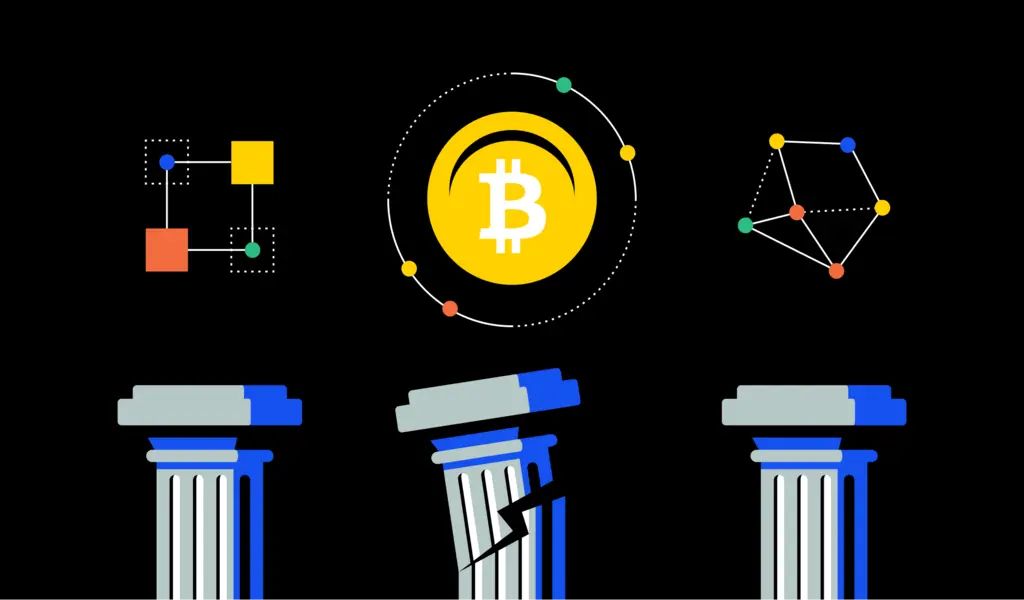Amid the dynamic realm of digital currencies, the online trading platform Immediate Momentum has distinctly maintained its position as a focal point in discussions, debates, and financial currents. The remarkable surge in Bitcoin’s value and its consequential influence on the global economy have magnetized the interest of not only proponents but also doubters.
Among the pivotal subjects encircling Bitcoin, its energy consumption emerges as a particularly contentious matter. This exposition aims to comprehensively explore the truths and misconceptions enveloping Bitcoin’s energy usage, elucidating the intricacies frequently marginalized in prevailing conversations.
The Energy Perception
Myth: Bitcoin’s Energy Consumption is Comparable to Small Nations
One prevailing myth is that Bitcoin’s energy consumption rivals that of small countries. While it is true that the energy consumption is substantial, it’s crucial to provide context. Bitcoin’s energy consumption is often compared to countries like Argentina or the Netherlands.
However, this comparison is misleading. Bitcoin operates on a global scale, facilitating transactions and value transfer worldwide. Energy consumption is more akin to powering a digital global economy rather than a single nation.
Reality: Banking System vs. Bitcoin
To put things in perspective, let’s consider the traditional banking system. The infrastructure, buildings, and workforce required to operate banks globally consume a significant amount of energy as well. While Bitcoin’s energy usage is visible on the blockchain, the energy consumption of traditional systems is less transparent but still substantial.
Unveiling the Mechanism
Myth: Bitcoin’s Energy Consumption is Inefficient
Critics often point out that the energy consumed during Bitcoin mining is wasteful. However, this myth overlooks the innovative consensus mechanism that underpins the cryptocurrency – Proof of Work (PoW). PoW is not just about solving complex mathematical puzzles; it’s a security feature. The energy-intensive nature of PoW ensures that malicious actors would need an immense amount of computational power to compromise the network.
Reality: Pushing Technological Boundaries
Bitcoin mining has been a driving force for advancements in semiconductor technology and renewable energy solutions. Miners are incentivized to find the most energy-efficient solutions to remain competitive. This has led to a surge in research and development in renewable energy sources, with miners exploring ways to power their operations sustainably.
Environmental Concerns
Myth: Bitcoin is an Environmental Disaster
The media often portrays Bitcoin as an environmental villain, with alarming headlines about its carbon footprint. While it’s true that early mining operations relied heavily on fossil fuels, the industry has undergone significant changes. Miners are now actively seeking out locations with abundant renewable energy, such as hydroelectric and solar power.
Reality: Fostering Renewable Energy Adoption
Bitcoin mining’s demand for renewable energy has prompted the development of cleaner energy sources in regions that were previously untapped. For instance, some mining operations are sited near solar farms, utilizing excess energy that would otherwise go to waste. This synergy between Bitcoin mining and renewable energy can accelerate the world’s transition to cleaner power sources.
The Human Element
Myth: Bitcoin’s Energy Consumption is Inherently Wasteful
Another myth to dispel is the notion that all energy consumption is inherently wasteful. Bitcoin’s energy usage is a direct result of its popularity and value. Instead of labeling it as wasteful, one should view it as a reflection of the immense human interest and trust in the system.
Reality: Redefining Consumption
As our understanding of energy consumption evolves, we are becoming more conscious of how various industries utilize resources. Bitcoin’s energy consumption has catalyzed conversations about responsible energy use and the need for continued innovation in energy-efficient technologies.
Striving for Balance
Myth: Bitcoin’s Energy Consumption Will Only Escalate
There is a prevalent fear that Bitcoin’s energy consumption will spiral out of control, leading to environmental disaster. However, the cryptocurrency ecosystem is dynamic and adaptive. Developers, researchers, and the community are actively working on solutions to mitigate energy consumption while maintaining the network’s security and functionality.
Reality: Evolution and Adaptation
Bitcoin’s energy consumption is a challenge that the entire community acknowledges. Proposals for transitioning to more energy-efficient consensus mechanisms, like Proof of Stake (PoS), are being explored. These changes, if implemented successfully, could drastically reduce the energy footprint of Bitcoin without compromising its core principles.
Conclusion
In the grand scheme of global energy consumption, Bitcoin’s share might be significant, but it’s important to move beyond the myths and delve into the complexities of reality. As the world becomes increasingly digital, discussions around energy consumption and sustainability become more critical.
Bitcoin’s journey is intertwined with technological progress, environmental consciousness, and economic evolution. While myths might capture attention, it’s the realities that drive meaningful change and progress.
In conclusion, the discourse around Bitcoin’s energy consumption should not be reduced to oversimplified comparisons and sensationalist headlines. By understanding the nuances, innovations, and efforts within the Bitcoin ecosystem, we can engage in more informed discussions about the future of digital currencies and their role in shaping a more sustainable world.
SEE ALSO: Apple Addresses Overheating Issues In iPhone 15 Series: Software Bug And App Usage Identified
⚠ Article Disclaimer
The above article is sponsored content any opinions expressed in this article are those of the author and not necessarily reflect the views of CTN News






